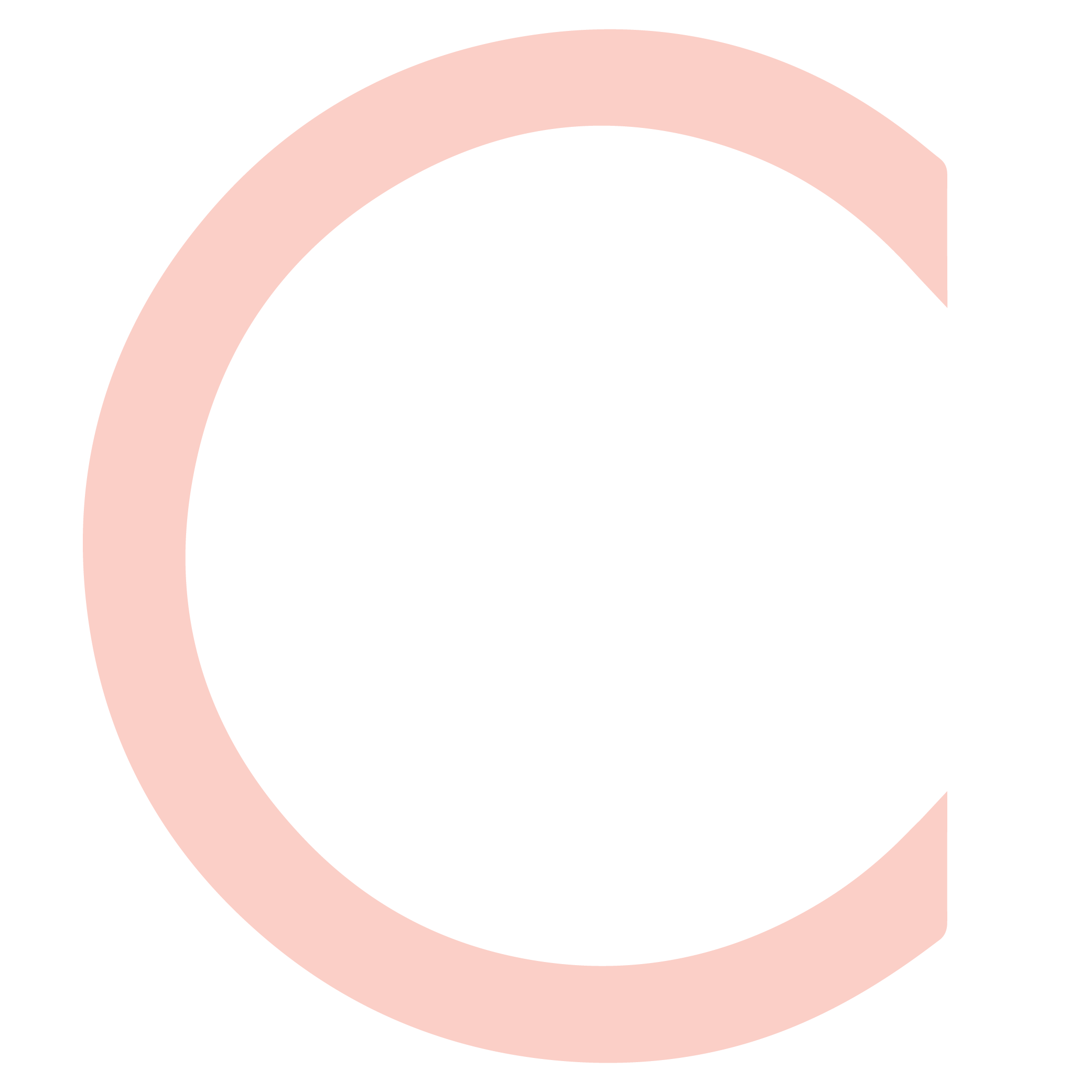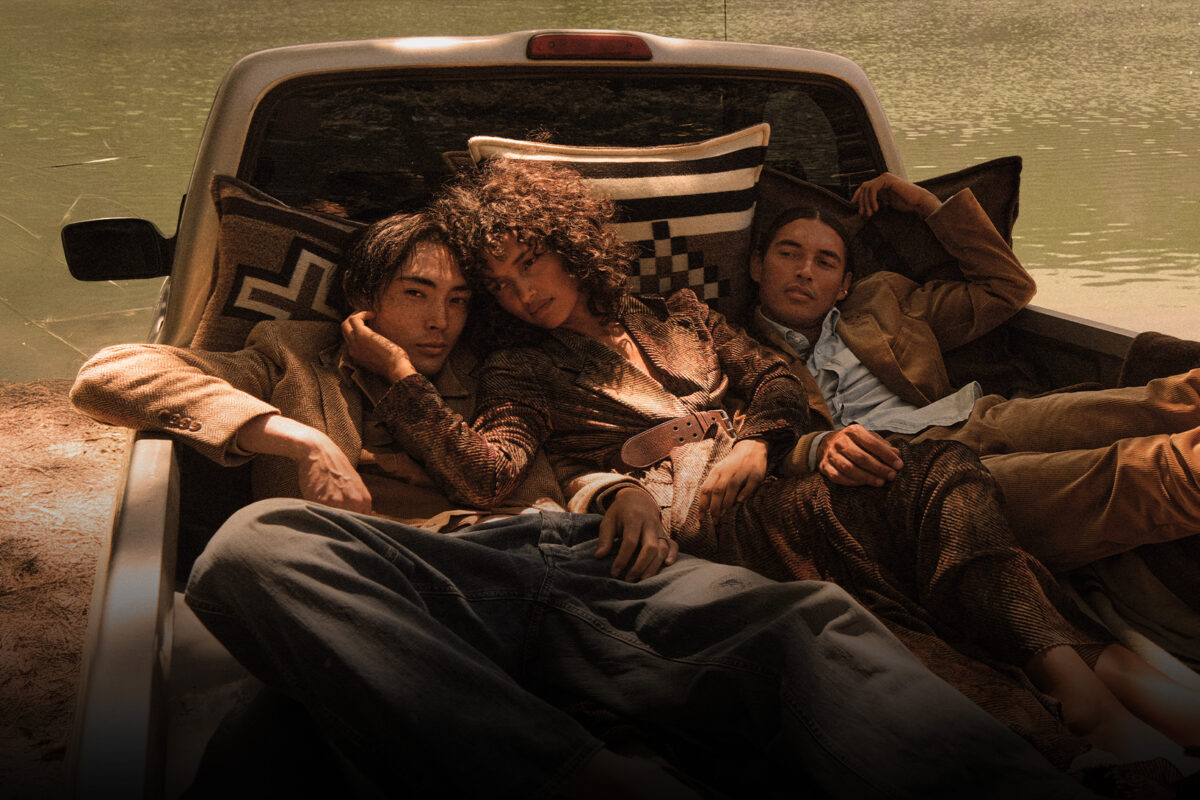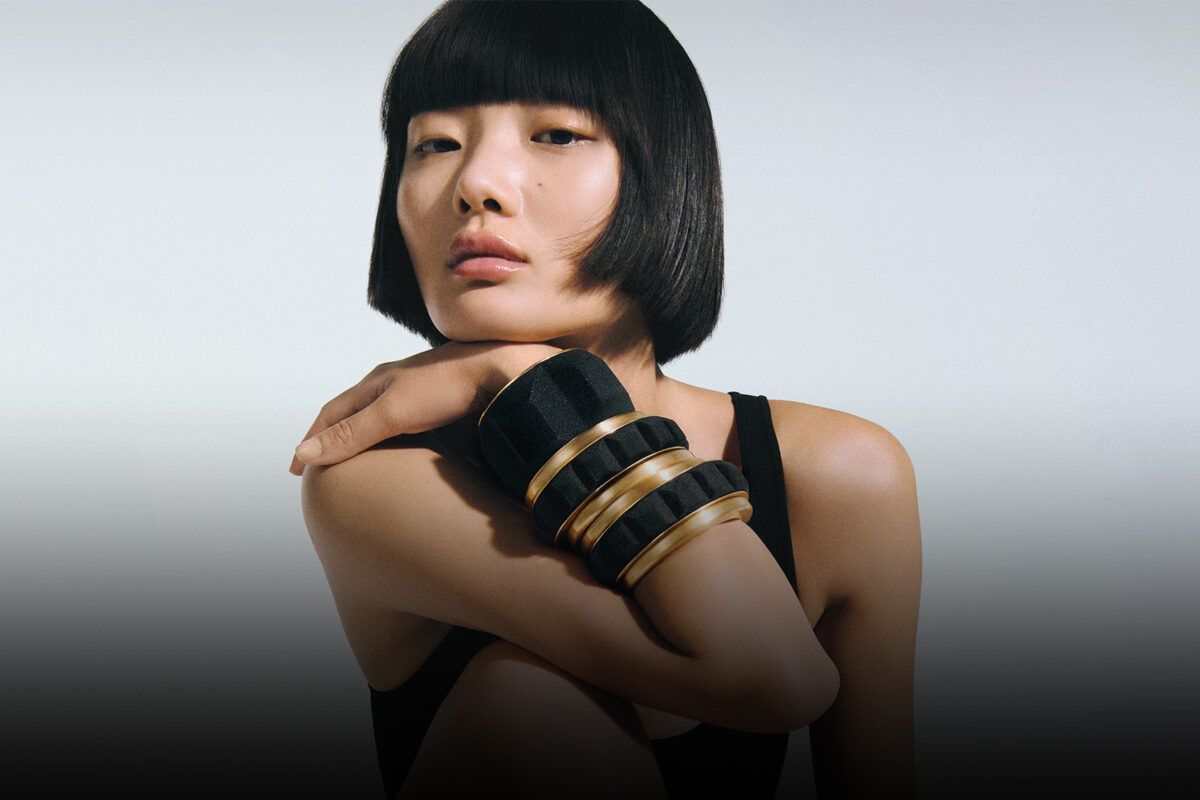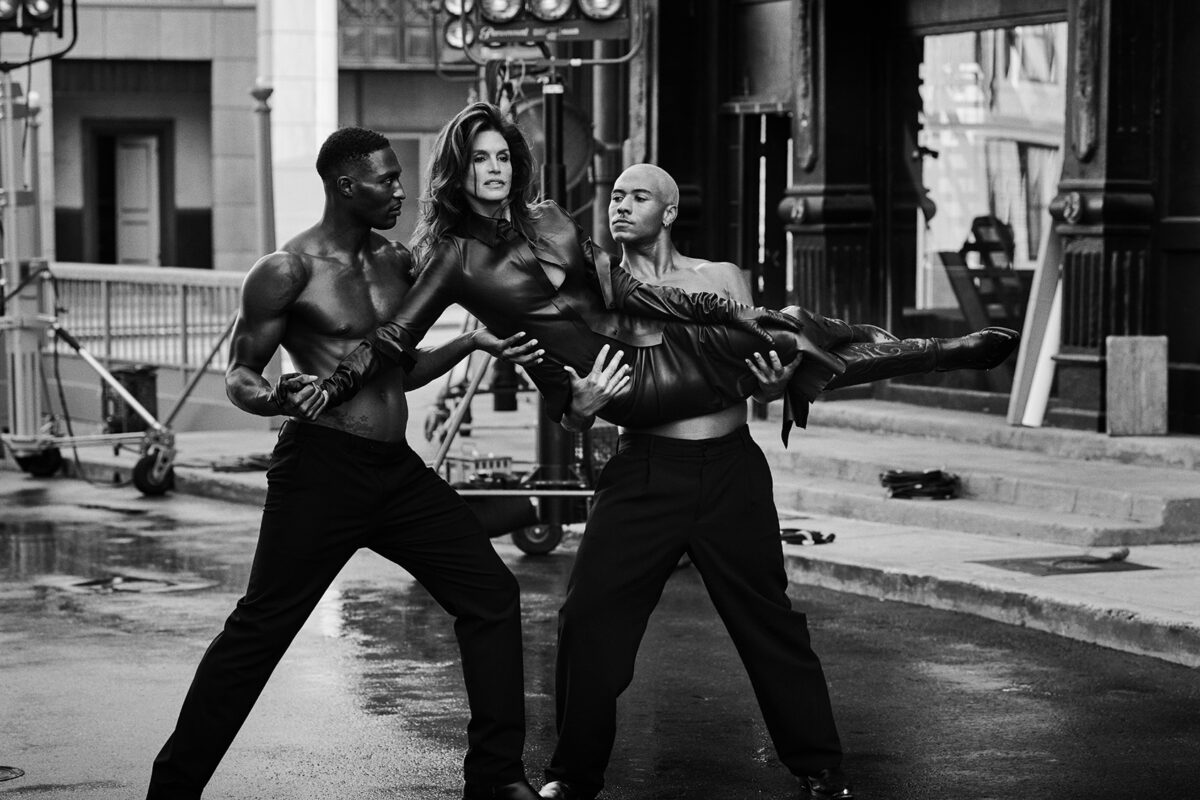Over the past two decades, Los Angeles went from fashion’s stepchild to its standout star — welcome to Hollywood, where the red carpet is the new front row
Words by BOOTH MOORE
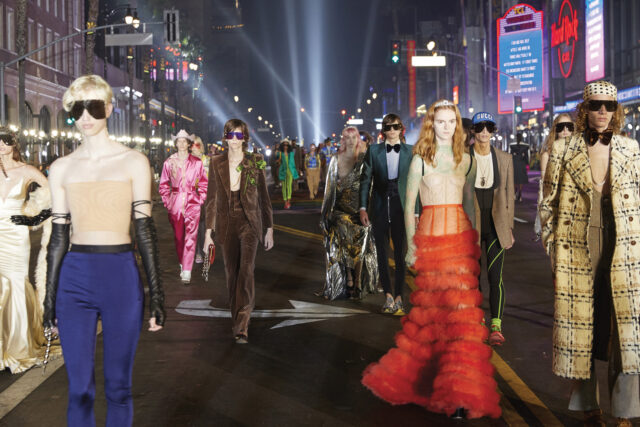
On the Venice Film Festival red carpet this summer, actress of the moment Greta Lee wore a knockout black satin and green organza minidress with a long bow detail that introduced the next chapter of Dior. It was weeks before its new creative director, Jonathan Anderson, was set to show his first women’s collection for the world’s foremost couture house, one of the most anticipated debuts this decade. It proves that the red carpet has become as important, or even more so, than the runway in fashion brand building. It also shows how far Los Angeles has come as a center of global fashion.
Days later, Lee was announced as a new Dior ambassador, continuing the successful designer-muse relationship she and Anderson had at his previous brand, Loewe. With designers increasingly engaged in storytelling, their collaboration is reminiscent of the ones between film stars and directors in old Hollywood, like Katharine Hepburn and George Cukor.
Twenty years ago, things were very different. Much of the fashion industry looked down on L.A. — too provincial, too casual. The golden years of Hollywood had brought some of the most famous costume designers in the world to L.A. But they were long gone by 2003, when Rick Owens fled the T-shirt-and-jeans stigma of the City of Angels for the City of Light to build a luxury brand.
But now that luxury is less about selling formal clothes and more about selling an image, L.A. has offered fashion an entire industry devoted to the stories needed to feed all the screens that demand our attention. And corporate investment has followed.
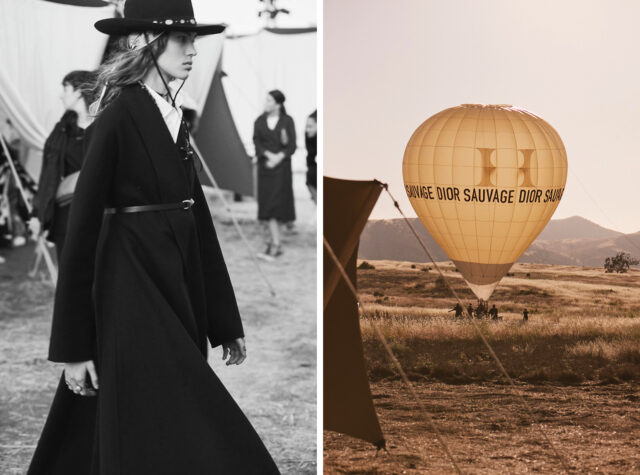
French luxury conglomerate LVMH has gobbled up real estate for its ever-expanding brand flagships on Rodeo Drive, including the newly proposed Frank Gehry–designed Louis Vuitton campus at the top of the street, a forthcoming Tiffany & Co. flagship on the site of the shuttered Luxe Rodeo Drive Hotel, and a Dior flagship replete with a restaurant and café opening soon. Gucci has sponsored the LACMA Art+Film Gala since its inception in 2011, and Belgian designer par excellence Dries Van Noten chose L.A. in 2020 for his first U.S. store.
Luxury’s growing obsession with Hollywood culminated in 2023, when Kering Group cofounder François Pinault’s holding company, Artémis, acquired a majority stake in the talent agency CAA. Suddenly, the same business that owned Gucci and Saint Laurent also represented the stars wearing them. Saint Laurent took it further the same year by starting its own film production arm under the fashion brand’s creative director, Anthony Vaccarello. The house produces films starring Pedro Pascal and competes at international festivals (Father Mother Sister Brother took the Golden Lion in Venice), treating cinema not as a sideline but as an extension of the runway with creative direction and costumes integrated throughout.
Now nearly every luxury player is engaging the film world, whether it’s Tiffany & Co. providing jewelry for Guillermo del Toro’s Frankenstein, Chanel opening its ateliers for the filming of Couture, or Gucci unveiling creative director Demna’s first designs within a short film starring Demi Moore, Keke Palmer, Kendall Jenner, and Edward Norton, directed by Spike Jonze and a Milan fashion week premiere attended by Gwyneth Paltrow.
What drew high fashion to L.A. wasn’t just sunshine and palm trees; it was relevance.
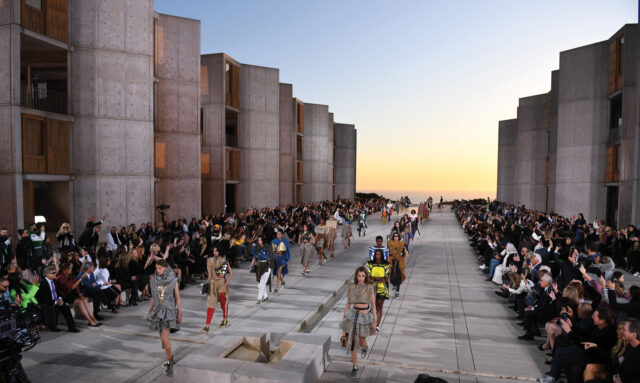
Designers across the industry, including Dior’s Anderson, have embraced costume design and cinematic storytelling to play out on screens big and small — he provided costume design for Luca Guadagnino’s most recent films, Challengers and Queer, while he was at Loewe.
Celebrity designers have also prospered. Pharrell Williams is the head of menswear at Louis Vuitton, bringing Hollywood to the highest echelon of French design. The Row, helmed by California-born Mary Kate and Ashley Olsen, has become a pillar of pared-down sophistication, valued at $1 billion after recent investments from the Wertheimer family (owners of Chanel) and L’Oréal heiress Françoise Bettencourt Meyers.
At the other end of the price spectrum, Gap is in the midst of a transformation tied to pop culture and orchestrated by CEO Richard Dickson, formerly of Mattel, who arrived on the heels of his success helping produce Hollywood’s Barbie movie. He hired Anna Wintour favorite Zac Posen to head design, a masterstroke that took Gap onto the Met Gala red carpet.
What drew high fashion to L.A. wasn’t just sunshine and palm trees; it was relevance. This is where images are made and exported, where a beauty brand can go from start-up to a $1 billion acquisition, fueled by the power of celebrity and social media. The city offers backdrops and inspiration, talent, and infrastructure where fashion can most directly plug into the machinery of fame.
But how did we get here?
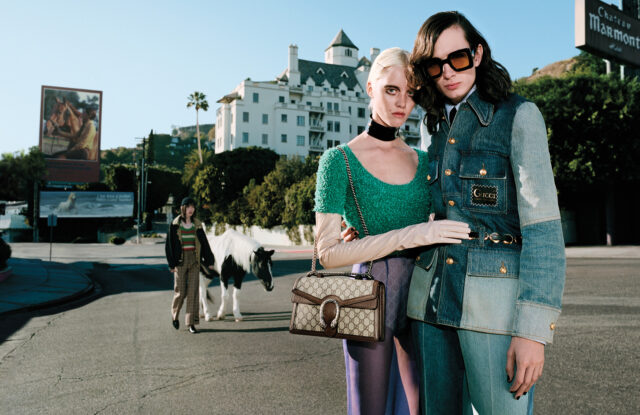
The transformation of L.A. into a global fashion capital didn’t happen overnight. One could argue it began in 2004, when Tom Ford — still reeling from his bitter exit from Gucci — chose L.A. as his new home base.
Ford was already a legend — the man who turned Gucci into the sexiest brand on earth, drawing inspiration from L.A. and his own Richard Neutra–designed house in Holmby Hills, which informed the clean lines of Gucci boutiques. Additionally, Bob Mackie’s designs for Cher and Diana Ross inspired collections. “When he thinks about the American woman, he thinks about L.A.,” his friend and collaborator Lisa Eisner told me in 2004.
His arrival proved L.A. wasn’t just a one-industry town. It was a place a fashion designer of Ford’s stature could reimagine himself. Ford began writing and directing films. His debut, A Single Man (2009), was a stylish meditation on love and loss that earned Colin Firth an Oscar nomination. His sophomore effort, Nocturnal Animals (2016), was darker but just as visually arresting. Ford’s move blurred the line between designer and auteur, foreshadowing an era when fashion and film would become interchangeable forms of storytelling.
In 2012, Hedi Slimane shocked the French fashion establishment by trading Paris for L.A. when he took the creative helm at Saint Laurent. He already owned a midcentury home in Trousdale Estates, where he spent time working on his Dior Homme slimline collections, which dominated fashion for a time.
But at Saint Laurent, he shifted the entire creative axis of the brand westward. The atelier was moved to L.A., campaigns photographed by Slimane were street cast with kids from the clubs and beaches, as well as celebrity offspring like Jack Kilmer (son of Val) and Dylan Jagger Lee (son of Pamela Anderson and Tommy Lee). The clothes were steeped in the mythology of the Chateau Marmont, 1970s bohemia, and rock ’n’ roll.
Luxury houses realized L.A. was the home to many muses.
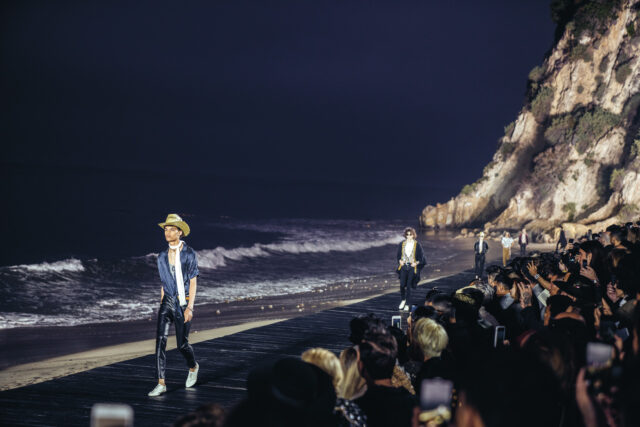
In 2016, it all culminated in a runway show at the Palladium Theater in Hollywood just before the Grammys. Suddenly, the idea of a Parisian maison attached to L.A. culture didn’t seem absurd. It seemed visionary.
L.A. designers had entered the high-fashion conversation thanks to the popularity of streetwear and more casual clothing. By the time Mike Amiri unveiled his collection in 2014, the landscape had changed. Amiri’s distressed denim and embellished T-shirts, with a built-in celebrity fan base that includes rock and hip-hop’s finest, from Keith Richards to Kendrick Lamar, captured the attention of Italian entrepreneur and Diesel founder Renzo Rosso. In 2019, his OTB Group took a minority investment in the brand, fueling its global growth to 29 stores. Luxury houses were realizing that L.A. was home to many of their muses, who attracted more media attention at a show than the clothes coming down the runway. It was a source of entertainment synergy and cinematic backdrops for storytelling. By the mid-2010s, runway shows in L.A. became the industry’s most glamorous pilgrimages.
Karl Lagerfeld was the early adopter. In 2007, Chanel landed at Santa Monica Airport, transforming Barker Hangar into an exclusive airport lounge that had models disembarking from jets onto the runway.
“Fashion has come to Hollywood. He’s paved the way for many more designers, I hope,” Victoria Beckham told Vogue at the time. Recently transplanted to L.A. herself, Beckham would release her own collection a year later.
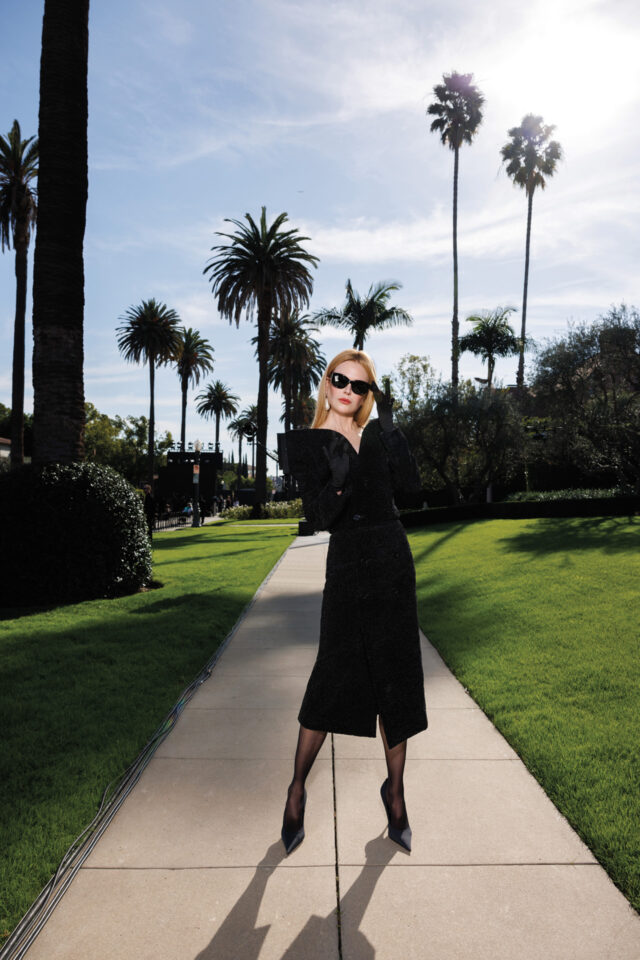
That ahead-of-its-time Chanel show felt like an amuse-bouche. In February 2015, Ford, who had his own namesake fashion brand by then, held a star-studded runway show during Oscar weekend, signaling the growing closeness between fashion and celebrity. Beyoncé, Jay-Z, Miley Cyrus, Jennifer Lopez, and Julianne Moore made the scene rival an awards show after-party. The collection inspired by “a Hitchcock heroine if she morphed into a rich bohemian,” as Ford said at the time, looked right at home, with supermodel Karlie Kloss closing out the show as white rose petals rained down on the runway.
In April of that year, Burberry staged its “London to Los Angeles” show at the Griffith Observatory, with Union Jacks flying, a parade by the palace guard, and David, Victoria, and the Beckham brood, Rosie Huntington-Whiteley, Cara Delevingne, and Anna Wintour among the 700 guests with the L.A. lights blanketed before them.
And in May, Louis Vuitton chose the Bob Hope House in Palm Springs for its resort show, with models navigating John Lautner’s retro-futuristic estate in leather bandoliers and wildly romantic dresses, while Selena Gomez, Catherine Deneuve, and Michelle Williams watched alongside 550 guests who traveled from as far as China.
The scene was inspired in part by Robert Altman’s 1977 film 3 Women, starring Shelley Duvall, Sissy Spacek, and Janice Rule, which was shot in Palm Springs, designer Nicolas Ghesquière said in an admission of how much and how often fashion designers are inspired by Hollywood film and costume. The creative director loved it all so much that seven years later, he bought his own Lautner house, the Wolff estate in the Hollywood Hills, where he now lives part time.
Fashion designers are inspired by Hollywood film and costume.

Then came Dior’s dusty Western-inspired spectacle in the hills of the Santa Monica Mountains in 2017, complete with hot-air balloons and Georgia O’Keeffe–inspired runway looks shown at dusk. Saint Laurent’s 2019 boardwalk runway collection, set against crashing waves, was a cinematic love letter to Mick Jagger in 1970s Marrakech, transported to present-day Malibu. Keanu Reeves, Miley Cyrus, and Hailey Bieber traded their shoes for zebra-patterned Saint Laurent flip-flops at the entrance and hit the sand for the show and dance party where The Blaze performed to the metronome of lapping waves.
Perhaps the pinnacle of L.A. as a fashion set came in 2021, when Gucci shut down Hollywood Boulevard. Searchlights lit up the sky, and the neon marquee of the El Capitan Theatre flashed “Gucci Love Parade” as black Suburbans pulled up, depositing Gwyneth Paltrow and Billie Eilish in director’s chairs along the Walk of Fame. Designer Alessandro Michele’s 115-look fashion extravaganza, covering golden-age glamour, cowboys, and kink, took over the street like a movie premiere on steroids; it has nearly six million views on YouTube.
Chanel was back again in May 2023, taking over Paramount studios for a runway show that put old Hollywood, 1980s fitness chic and Barbiecore front and center, just ahead of its brand ambassador Margot Robbie’s blockbuster Barbie film release. Louis Vuitton returned with a show at La Jolla’s Salk Institute in 2022, and later that year Ralph Lauren took over The Huntington Library with his.
The message was clear: L.A. wasn’t just a backdrop anymore; it was the main stage for creativity, collaboration, and celebrity culture. No wonder Vogue World has chosen it for its next outing this fall.
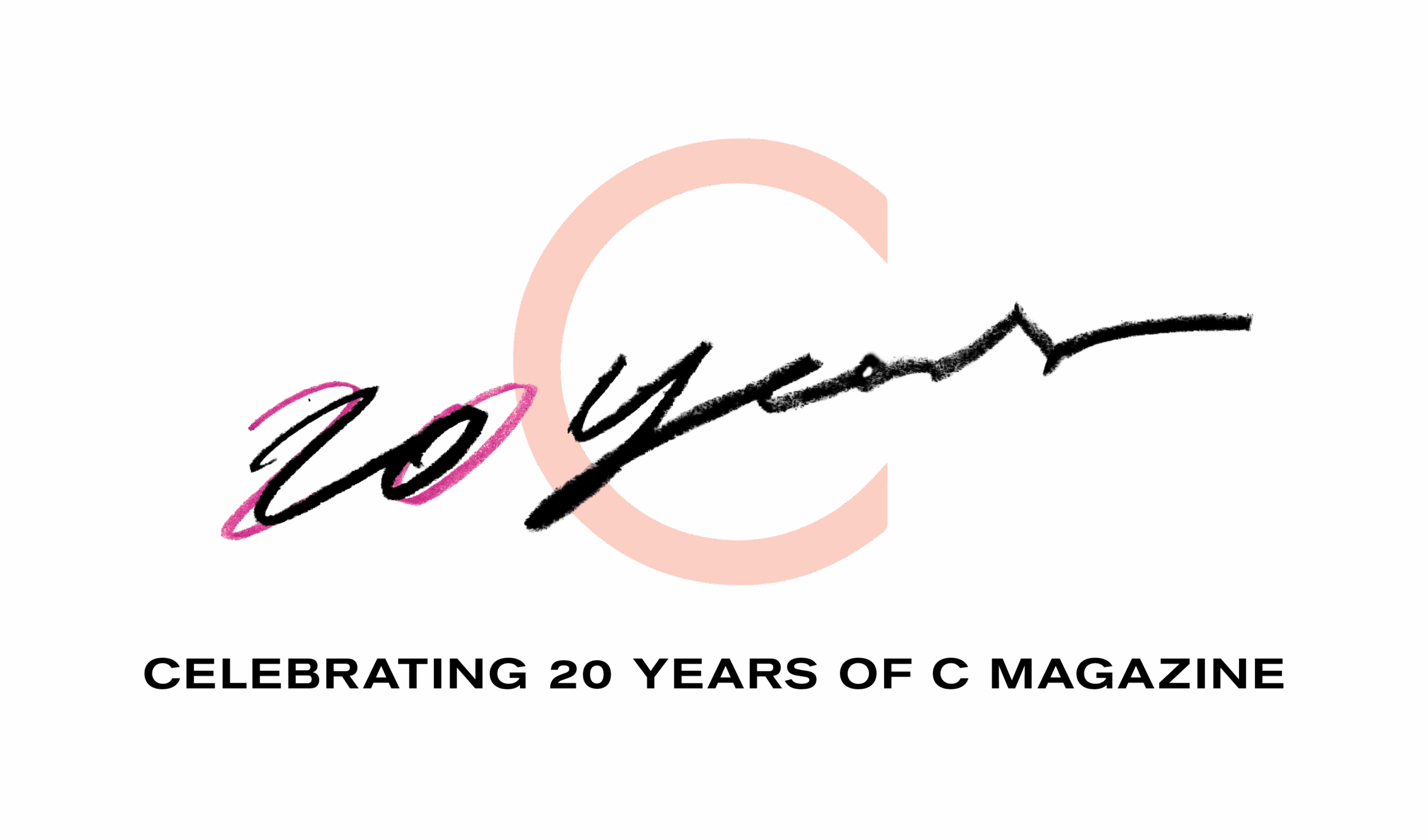
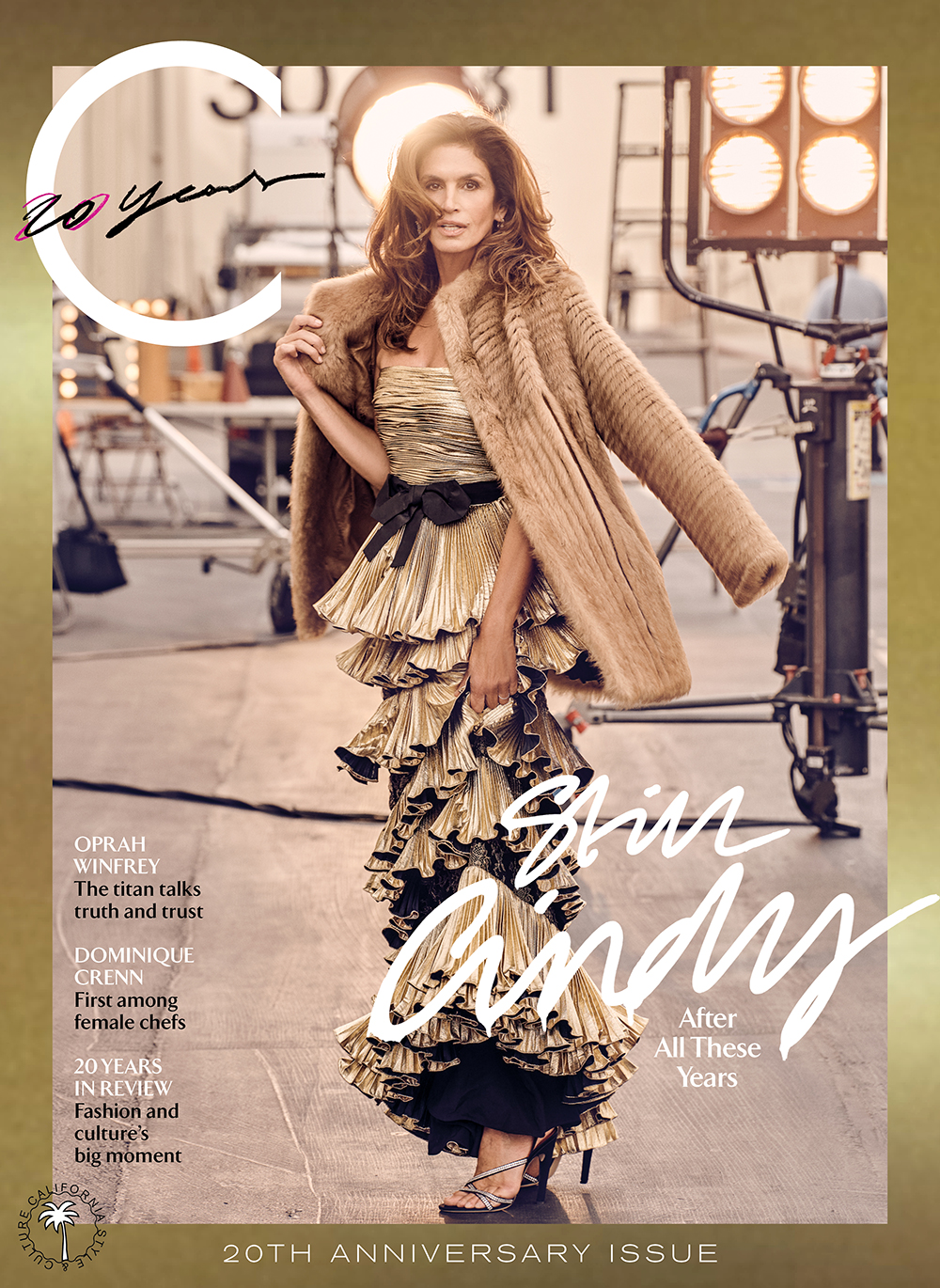
Feature image: Balenciaga’s Pre-Fall 24 show was staged on a street in Hancock Park.
This story originally appeared in the 20th Anniversary 2025 issue of C Magazine.
Discover more STYLE news.
See the story in our digital edition
&
